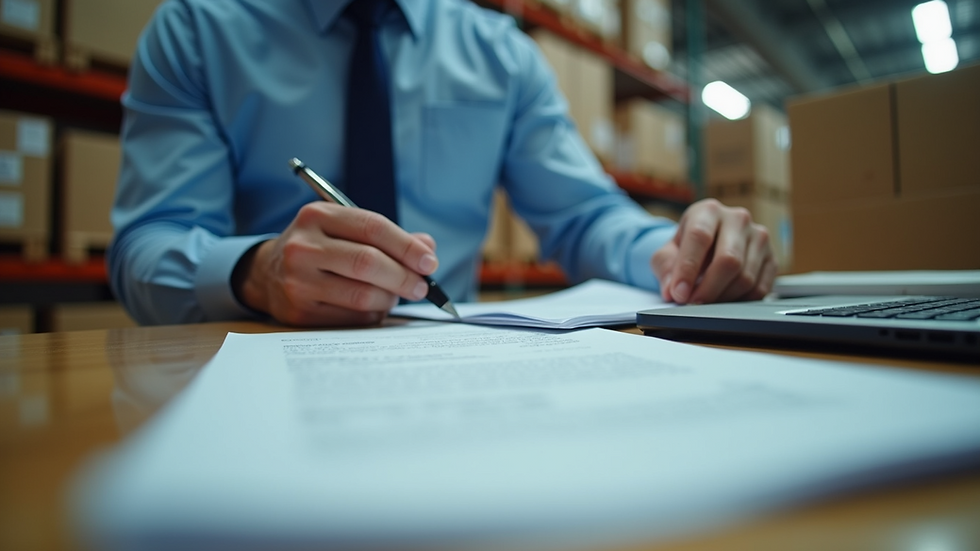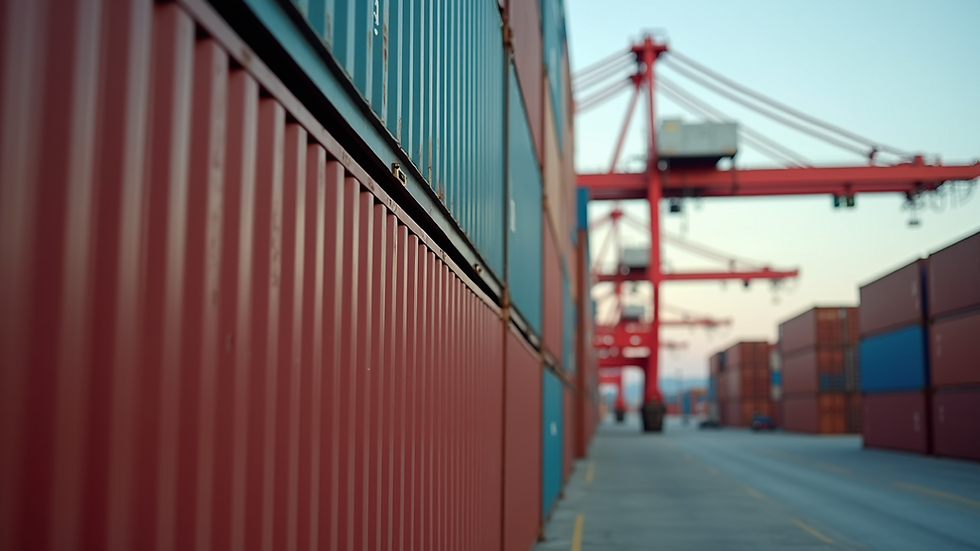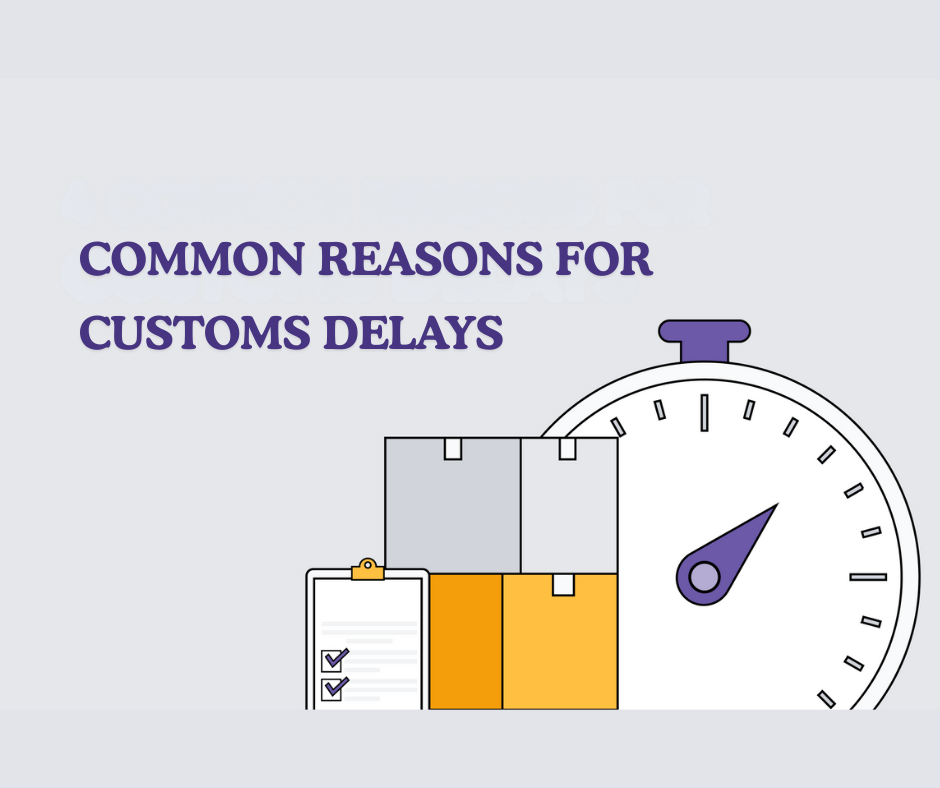Simplifying Import Customs Clearance Processes
- Le
- Aug 19, 2025
- 4 min read
Updated: Sep 15, 2025
Importing goods like apparels, household products, automobiles, or industrial parts into the U.S. can feel overwhelming. The process involves many steps, rules, and paperwork. But it doesn’t have to be complicated. With the right knowledge and approach, you can simplify the import customs clearance essentials and get your shipments through quickly and smoothly.
In this post, I’ll walk you through the key points you need to know. I’ll share practical tips and clear explanations to help you avoid common pitfalls. Whether you’re new to importing or looking to improve your process, this guide is for you.
Understanding Customs Clearance Essentials
Customs clearance is the official process where your imported goods are checked and approved by U.S. Customs and Border Protection (CBP). This step ensures that your shipment complies with all laws, duties, and taxes before entering the country.
Here are the main components of customs clearance essentials:
Documentation: You need accurate paperwork like the bill of lading, commercial invoice, packing list, and any required certificates or licenses.
Duties and Taxes: Customs calculates fees based on the type and value of your goods. Paying these promptly is crucial.
Inspections: Sometimes, shipments are physically inspected to verify contents and compliance.
Classification: Goods must be correctly classified under the Harmonized Tariff Schedule (HTS) to determine duties.
Getting these right can save you time and money. For example, misclassifying industrial parts can lead to unexpected fees or delays. Double-check your paperwork and classifications before shipping.

How to Prepare for a Smooth Customs Clearance
Preparation is key to avoiding headaches during customs clearance. Here are some actionable steps you can take:
Work with a Trusted Customs Broker
A customs broker acts as your guide through the process. They understand the rules and can handle paperwork, classification, and communication with CBP. This reduces errors and speeds up clearance.
Keep Your Documentation Accurate and Complete
Incomplete or incorrect documents are the top cause of delays. Make sure your commercial invoice matches the shipment exactly. Include detailed descriptions and values.
Know Your Product’s Classification and Duties
Use the HTS codes to classify your goods correctly. This affects the duty rate and any restrictions. If you’re unsure, ask your customs broker for help.
Stay Updated on Regulations
Import rules can change. For example, certain household products may require special certifications or meet safety standards. Regularly check CBP updates or consult your broker.
Plan for Inspections
While not all shipments are inspected, be ready to provide additional information or samples if requested. This can prevent long holds at the port.
By following these steps, you’ll reduce the risk of delays and fines. Remember, a little preparation goes a long way.
How long does customs clearance take for imports?
One of the most common questions is: How long will customs clearance take? The answer depends on several factors:
Type of Goods: Some products, like automobiles or industrial parts, may require more detailed inspections or certifications.
Accuracy of Documentation: Complete and correct paperwork speeds up the process.
Volume of Shipments: Busy ports or peak seasons can cause delays.
Customs Broker Efficiency: Experienced brokers can expedite clearance by handling issues quickly.
Typically, clearance can take anywhere from a few hours to several days. For example, a shipment of apparels with all documents in order might clear within 24 hours. On the other hand, a complex industrial part shipment needing extra inspections could take longer.
To minimize wait times, work closely with your customs broker and provide all requested information promptly. They can also advise on the best shipping routes and methods to speed up clearance.

Common Challenges and How to Overcome Them
Even with preparation, some challenges can arise during customs clearance. Here are a few common issues and how to handle them:
Incorrect or Missing Documentation
This is the most frequent cause of delays. Always double-check your paperwork before shipment. Use a checklist to ensure nothing is missing.
Misclassification of Goods
Incorrect HTS codes can lead to higher duties or shipment holds. Consult your customs broker or use official resources to classify goods properly.
Unpaid Duties or Fees
Customs will hold your shipment if fees are unpaid. Set up payment methods in advance and confirm amounts with your broker.
Regulatory Compliance Issues
Some products require special permits or certifications. For example, certain household chemicals or automotive parts may need EPA or FDA approval. Research requirements early.
Unexpected Inspections
While inspections are random, having organized records and quick access to information can speed up the process.
By anticipating these challenges, you can act quickly and keep your shipments moving.
Why Partnering with a Customs Broker Makes a Difference
Navigating customs clearance on your own can be tricky. That’s why partnering with a professional customs broker is a smart move. Here’s why:
Expertise: Brokers know the latest regulations and how to handle complex shipments.
Time Savings: They manage paperwork and communication with customs, freeing you to focus on your business.
Cost Efficiency: Avoid fines and delays that can add unexpected costs.
Personalized Support: Brokers can advise on best practices tailored to your products, whether apparels, automobiles, or industrial parts.
For example, Spirit CHB, Inc. specializes in helping importers clear customs smoothly and quickly. Their team ensures your shipments comply with all rules and helps prevent common issues that cause delays.
If you want to learn more about how they can assist you, check out their import customs clearance services.

Taking the Next Step with Confidence
Importing goods doesn’t have to be a stressful experience. By understanding the customs clearance essentials and preparing carefully, you can simplify the process and avoid costly delays.
Remember to:
Keep your documentation accurate and complete.
Classify your goods correctly.
Work with a trusted customs broker.
Stay informed about regulations.
Plan for inspections and fees.
With these steps, you’ll be well on your way to smooth customs clearance and successful importing.
If you’re ready to make your import process easier, consider reaching out to experts who can guide you every step of the way. Your shipments deserve to clear customs quickly and without hassle.
Thank you for reading! If you have questions or want to share your own import experiences, feel free to leave a comment below. I’m here to help you navigate the world of importing with confidence.




Comments